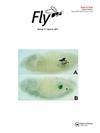Short is still sweet.
IF 2.2
4区 生物学
Q3 BIOCHEMISTRY & MOLECULAR BIOLOGY
引用次数: 0
Abstract
Shortly after taking over as Chief Editor of my former journal, EMBO Reports, I penned an editorial outlining the kind of research articles we were seeking as submissions [1]. The message was straightforward: we were looking for manuscripts reporting single key findings of note, which were backed up by multiple lines of evidence. Although EMBO Reports embodied the idea of short-format papers in its very name, I’m trying to bring the same philosophy to Fly. A common fault of many submitted ‘in-brief’ papers is that they present the results of just one experiment, often accompanied by exorbitant claims as to their significance. Reviewers, unconvinced that what was presented is a substantial advance, or even doubting its veracity entirely, then propose other experiments that they themselves dreamed up, which go off on a tangent, even if it’s an interesting tangent. The end result is that the paper becomes an unwieldy composite of two, three, or four disparate experiments, none of them backed up by independent evidence. When authors carry out an experiment demanded by a reviewer, which produces the anticipated result (‘the authors must demonstrate that ....’), the satisfied reviewer is often inclined to disregard the fact that the finding is of small magnitude, statistically questionable, or lacks independent repeats which the journal’s revision timetable made impossible. The published paper therefore ends up full of holes, is fundamentally unreliable, meanders all over the place and is rarely cited because nobody knows what it is really trying to say, even if the data are believable. At the opposite extreme, junior investigators often try to bend the parameters of a manuscript so that it includes every possibly relevant experiment they have ever done. The submitted draft thus resembles a ramble built from scraps demanded by reviewers, but from a much earlier stage. If the reviewers are awake, they will often seek removal of extraneous materials until, finally, little of substance is left, and it risks actually becoming the one-experiment paper that lacks evidentiary rigour; unless the editor is also awake. To me, the perfect short-format paper should have a laser focus on one simply formulated scientific question, that is then tested by different experimental approaches. Beyond that I would not seek to be prescriptive. The various streams of verification could be, for example, a bioinformatic prediction of an interaction, plus a biophysical test in vitro, plus a set of pulldown assays from a cell-line grown under different conditions and, finally, a phenotypic analysis of an in vivo model. Or any of hundreds of other possible combinations. The experiments should not simply be linked by a keyword, but should constitute parallel or sequential experimental tests of the specific hypothesis, where the outcome could be either ‘positive’ or ‘negative’, but should be coherent and statistically sound. Note that negative findings can provide at least as much mechanistic insight as positive ones. Negative results formally exclude a proposition, whereas positive ones tend simply to ‘not exclude it’. Only rarely do they provide such compelling evidence that they can be considered to have proven its validity. Asserting inappropriately that they do so is the basis of most of the exorbitant claims referred to above. How can you test whether your manuscript really fits the mould of a short-format paper? Many highprofile journals nowadays insist on short titles, such短的还是甜的。
本文章由计算机程序翻译,如有差异,请以英文原文为准。
求助全文
约1分钟内获得全文
求助全文
来源期刊

Fly
生物-生化与分子生物学
CiteScore
2.90
自引率
0.00%
发文量
17
审稿时长
>12 weeks
期刊介绍:
Fly is the first international peer-reviewed journal to focus on Drosophila research. Fly covers a broad range of biological sub-disciplines, ranging from developmental biology and organogenesis to sensory neurobiology, circadian rhythm and learning and memory, to sex determination, evolutionary biology and speciation. We strive to become the “to go” resource for every researcher working with Drosophila by providing a forum where the specific interests of the Drosophila community can be discussed. With the advance of molecular technologies that enable researchers to manipulate genes and their functions in many other organisms, Fly is now also publishing papers that use other insect model systems used to investigate important biological questions.
Fly offers a variety of papers, including Original Research Articles, Methods and Technical Advances, Brief Communications, Reviews and Meeting Reports. In addition, Fly also features two unconventional types of contributions, Counterpoints and Extra View articles. Counterpoints are opinion pieces that critically discuss controversial papers questioning current paradigms, whether justified or not. Extra View articles, which generally are solicited by Fly editors, provide authors of important forthcoming papers published elsewhere an opportunity to expand on their original findings and discuss the broader impact of their discovery. Extra View authors are strongly encouraged to complement their published observations with additional data not included in the original paper or acquired subsequently.
 求助内容:
求助内容: 应助结果提醒方式:
应助结果提醒方式:


